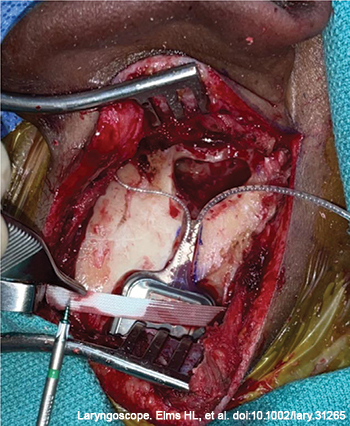To evaluate the efficacy of this technique, a retrospective patient data analysis was conducted using deidentified patient data according to a Duke University Institutional Review Board-approved exemption (protocol no. 00108742). Our institutional surgical database was queried by Current Procedural Terminology code for CIs performed between July 2013 and July 2022 at a single site. Patient operative reports were manually reviewed, and all patients whose reports described the above technique were included in analysis. Average operative times for these cases were extracted. Routine follow-up for patients included a two-week postoperative with the surgeon, one-month activation appointment with an audiologist, and annual audiologic appointments. Clinic notes and operative reports were reviewed for documentation of wound infections and revision surgeries for receiver/stimulator migration. Analyzed patient demographics included age, sex, and bilaterality of implants. Numerical and statistical analysis was performed using statistical functions within Microsoft Excel.
Explore This Issue
March 2024RESULTS
Between July 2013 and July 2022, 146 adolescent and adult patients underwent CI with the cerclage tape “seatbelt” technique. A total of 166 patient ears (20 bilateral implantations) were implanted during this interval. Seventy-nine (54.1%) patients were male. Age at first implantation ranged from 14 to 91 years (median 66.5).
Among implanted ears, there were zero instances of receiver/stimulator migration requiring surgical revision. Average operative time with the “seatbelt” technique was 107 minutes. There were no reported surgical site infections, device extrusions, or adverse reactions to the cerclage tape during the study interval. All but one patient (145 of 146, or 99.3%) presented for their activation appointments, and 84.9% were present at one-year audiologic follow-up. Follow-up intervals for this cohort ranged from one to 110 months (median 24).
